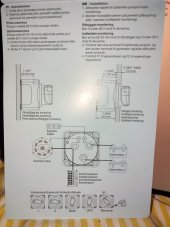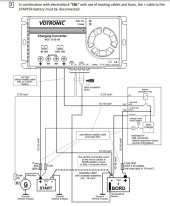Hi, i am new to the forum and could not find answers on my question so i will try here.
I have a 2006 Knaus WEINSBERG Imperial on a Renault master mk2 chasis, have a Calira EVS 30/20 -DS/UI electroblock that has 2 x 100ah lead acid batteries, the charger for those can do only lead and agm, i now have made a Diy 12v 280ah Lifepo4 battery that i also use as a backup or extending battery for my Ecoflow delta mini power bank.
So, i wish to be able to connect my diy Lifepo4 battery to my old lead acid motorhome system, when low on lead acid battery bank i can switch over to my Lifepo4 bank, could i make this happen with just a 1-2-off disconnect switch, also at what point to make this connection is the best?
Updated, i just bought a battery isolator with afd, where can i hook up the cables that goes to f1 and f2 in picture diagram below?
I have a 2006 Knaus WEINSBERG Imperial on a Renault master mk2 chasis, have a Calira EVS 30/20 -DS/UI electroblock that has 2 x 100ah lead acid batteries, the charger for those can do only lead and agm, i now have made a Diy 12v 280ah Lifepo4 battery that i also use as a backup or extending battery for my Ecoflow delta mini power bank.
So, i wish to be able to connect my diy Lifepo4 battery to my old lead acid motorhome system, when low on lead acid battery bank i can switch over to my Lifepo4 bank, could i make this happen with just a 1-2-off disconnect switch, also at what point to make this connection is the best?
Updated, i just bought a battery isolator with afd, where can i hook up the cables that goes to f1 and f2 in picture diagram below?
Attachments
Last edited:




